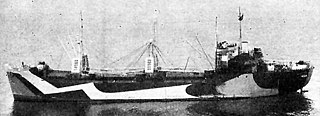Four United States Navy ships have borne the name USS Houston, after the city of Houston, Texas.
Three ships of the United States Navy have been named USS Long Beach, after the city of Long Beach, California:
USS Pegasus is the name of two ships of the United States Navy:
Two ships in the United States Navy have been named Aquila after the constellation Aquila.
USS Altair, USNS Altair, or SS Altair has been the name of more than one United States Navy ship, and may refer to:

USS Antrim (AK-159) was an Alamosa-class cargo ship in the United States Navy. She was named for Antrim County, Michigan.

USS Serpens (AK-97) was a Crater-class cargo ship commissioned by the United States Navy for service in World War II. She was the first ship of the US Navy to have this name: she is named after Serpens, a constellation in the northern hemisphere. Serpens was manned by United States Coast Guard personnel and was responsible for delivering troops, goods and equipment to locations in the Asiatic-Pacific Theater.

USS Aludra (AK-72) was a Crater-class cargo ship in the service of the US Navy in World War II. Named after the star Aludra in the constellation Canis Major, it was the first ship of the Navy to bear this name.
Two ships of the United States Navy have been named Aludra, after a star in the constellation Canis Major.

The Crater-class cargo ship were converted EC2-S-C1 type, Liberty cargo ships, constructed by the United States Maritime Commission (USMC) for use by the US Navy during World War II. The designation 'EC2-S-C1': 'EC' for Emergency Cargo, '2' for a ship between 400 and 450 ft long, 'S' for steam engines, and 'C1' for design C1.
Three ships of the United States Navy have been named Sirius, after Sirius , the brightest star visible from Earth other than the Sun.
USS Spica is a name used more than once by the United States Navy:
USS Alderamin (AK-116) was a Crater-class cargo ship commissioned by the U.S. Navy for service in World War II, named after Alderamin, the alpha star in constellation Cepheus. She was responsible for delivering troops, goods and equipment to locations in the war zone.

USS Alamosa (AK-156) was the lead ship of the Alamosa-class cargo ships, commissioned by the US Navy for service in World War II. She was responsible for delivering troops, goods and equipment to locations in the war zone.
USS Clarion (AK-172) was an Alamosa-class cargo ship commissioned by the U.S. Navy for service in World War II. She was responsible for delivering troops, goods and equipment to locations in the war zone.
USS Lebanon (AK-191) was a Alamosa-class cargo ship constructed for the US Navy during the end of World War II. However, as the war was ending, the need for additional cargo ships was found not necessary and Lebanon was sold for commercial service.
USS Minidoka (AK-196) was an Alamosa-class cargo ship that was constructed for the US Navy during the closing period of World War II. She was declared excess-to-needs and returned to the US Maritime Commission.

USS Screven (AK-210) was an Alamosa-class cargo ship that was constructed for the US Navy during the closing period of World War II. She served in the Pacific Ocean theatre of operations and returned home in 1946 to be placed into the "mothball fleet" where she remained until sold in 1947 for commercial maritime service.

USS Provo Victory (AK-228) was a Boulder Victory-class cargo ship acquired by the U.S. Navy during World War II. She served in the Pacific Ocean theatre of operations through the end of the war, and then returned to the United States for disposal.

USS Las Vegas Victory (AK-229) was a Boulder Victory-class cargo ship acquired by the U.S. Navy during World War II. She served in the Pacific Ocean theatre of operations through the end of the war earning one battle star, and then returned to the United States for disposal.
This page is based on this
Wikipedia article Text is available under the
CC BY-SA 4.0 license; additional terms may apply.
Images, videos and audio are available under their respective licenses.







